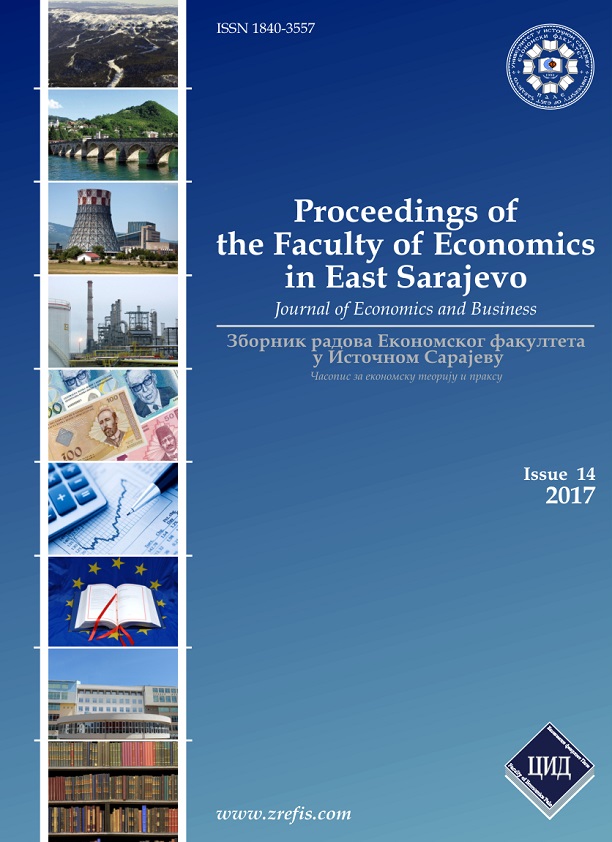CITY-BRAND BUILDING – FROM CITY MARKETING TO CITY BRANDING
DOI:
https://doi.org/10.7251/ZREFIS1714051MAbstract
Thanks to the mobility of the population and the development of economy, nowadays much more attention is payed to the competitiveness between nations, regions and cities. In the early 90s, a special marketing trend appeared, known as "Place branding" which allows cities, regions and nations to differentiate themselves from others (competitors). Nowadays, the "city marketing" approach is a well-established practice which is widely applied by many cities all around the world. During the past 30 years, when the competition between cities became bigger and more important, city marketing approach comes to the fore more and more. Although cities can be too complex for branding or to be treated as products, however, city branding has become a widely applied practice in the past years, ever since cities began to "fight" for: tourists, residents, prestige, wealth, power, commerce, entertainment,etc. By "too complex for branding" we mean that by implementing the city branding strategy we need to keep in mind the past, the cultural identity and the historical background of the city. When we say the past, we refer to all events and happenings in one specific city. For example, Madrid, London, New York, Paris, Brussels are just a few of the largest, but also the best branded cities in the world. Indeed, all of these cities experienced terrorist attacks in their past. Experienced, but survived. However, it is obvious that these events have had a huge impact on their positioning and branding. In order to become sustainable, successful destination (city) brand development must be, first of all, original and different, but convincing (based on physical and emotional charachteristics of the destinations) and relevant (directed towards the consumer in an appropriate way) as well. The authors' starting point is the hypothesis that the branding of cities is based on a combination of various factors and components and that with their combination we can build a recognizable image, which further contributes to higher tourism turnover and stronger competitiveness. Having in mind the previously mentioned, and when it comes to cities, marketing moves from a „city marketing“ to a „city branding“ concept. The aim of this paper is to carry out a symbiosis of key components, so we could offer guidance regarding the creation of a branding strategy to decision-makers in this field of marketing in our area.

